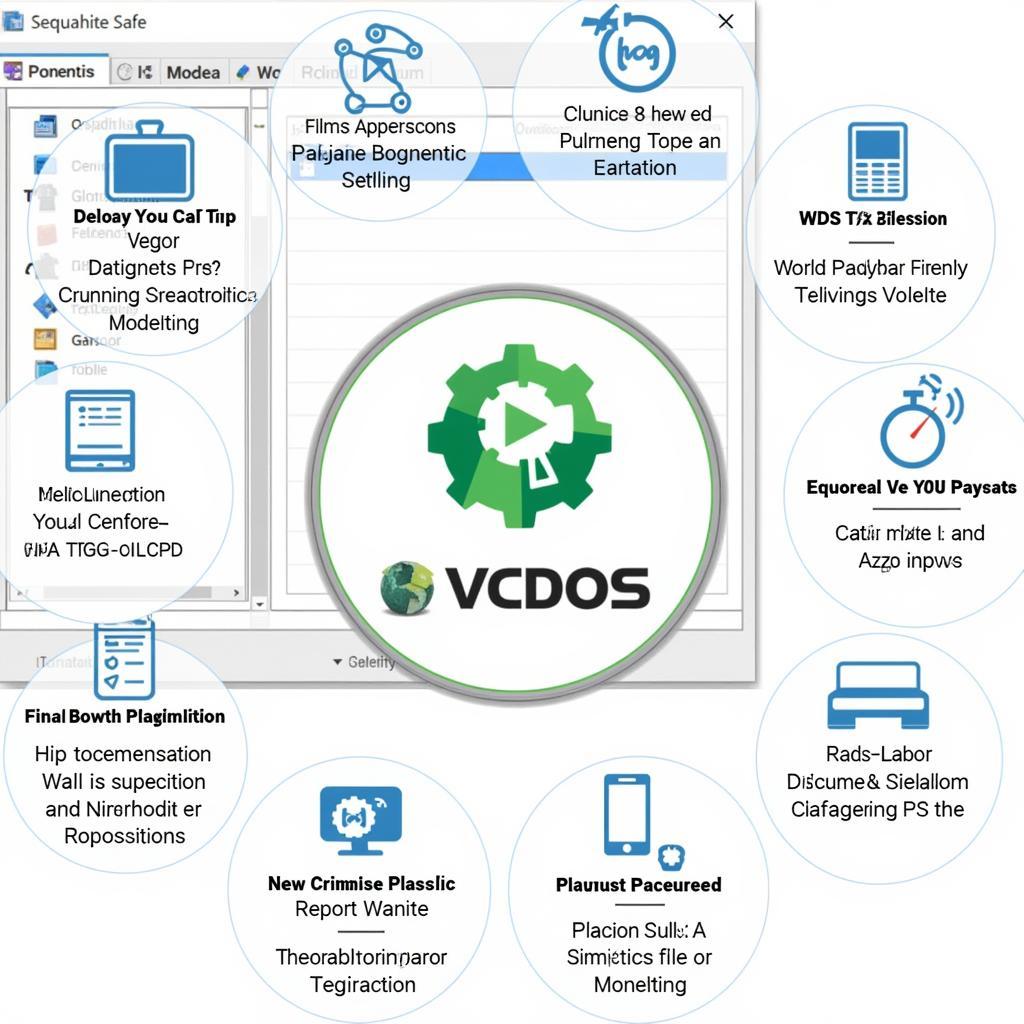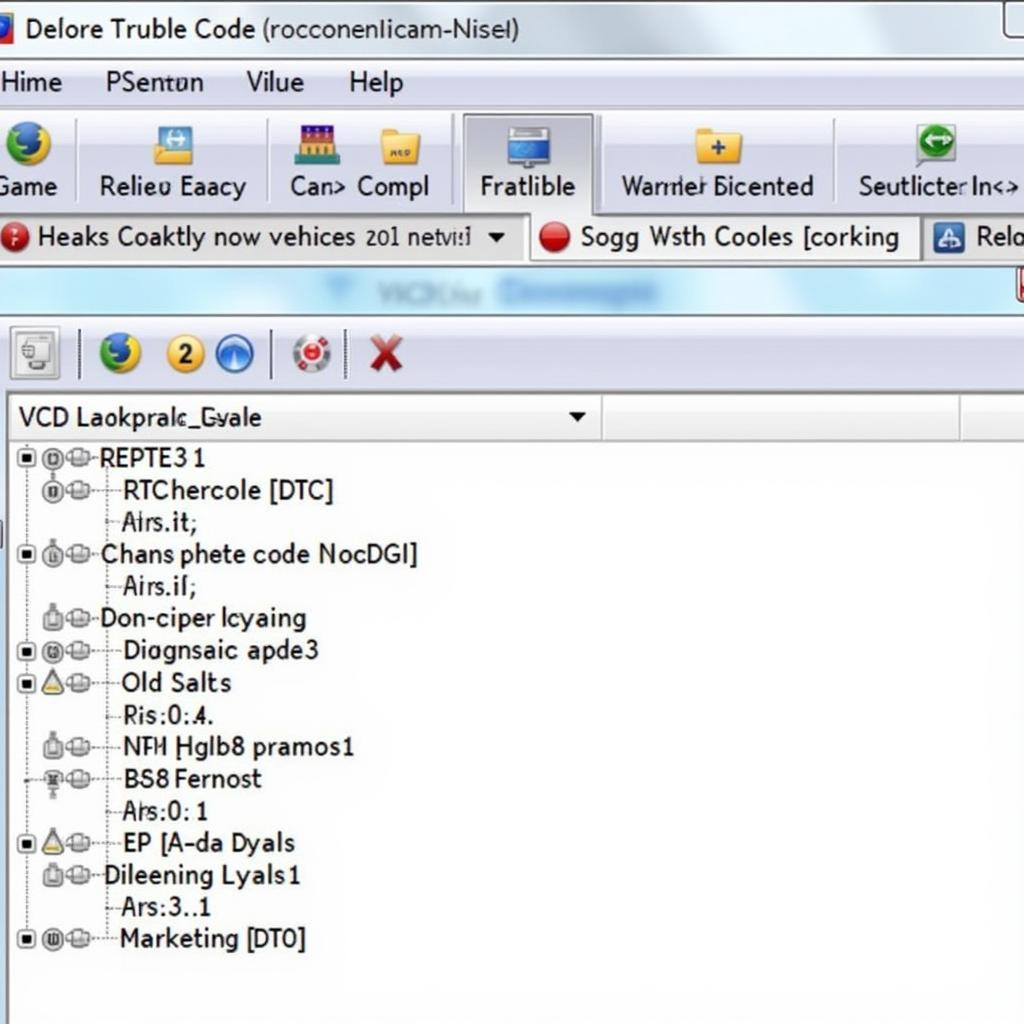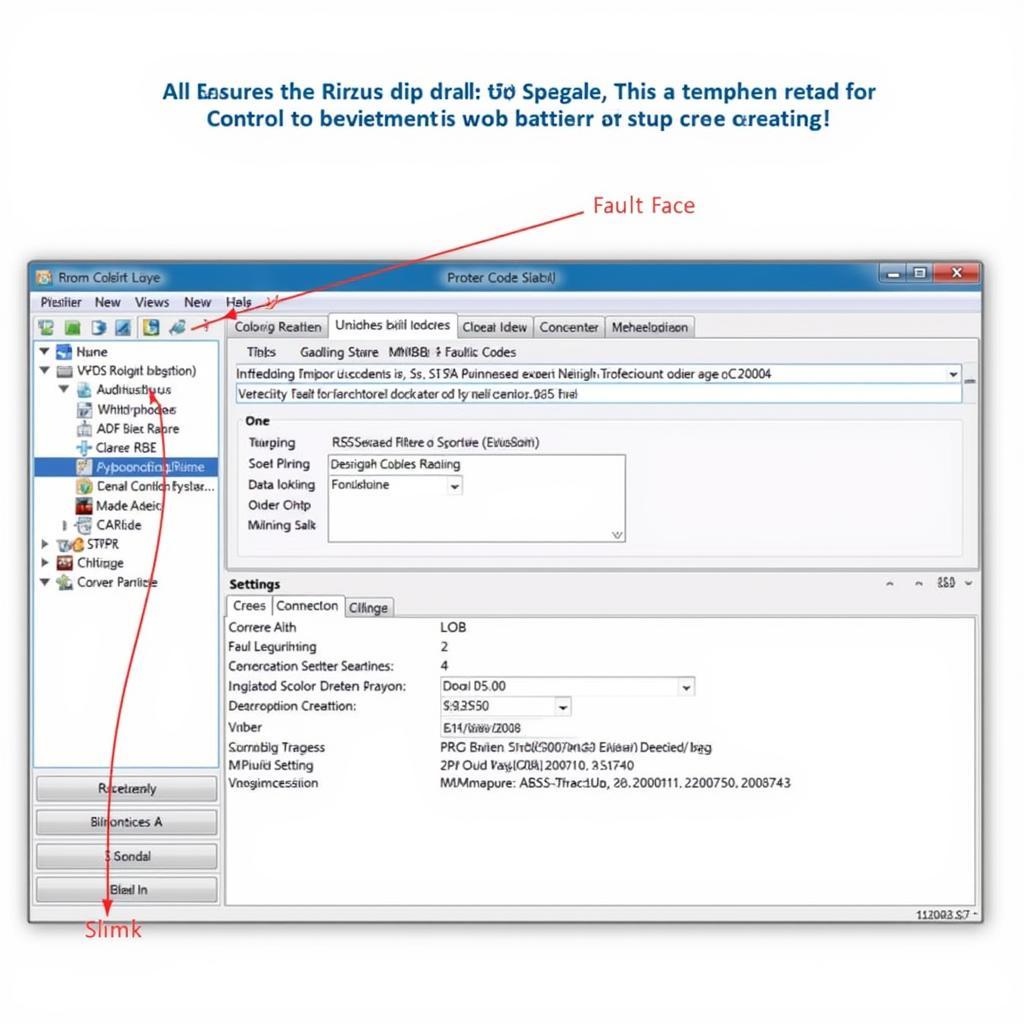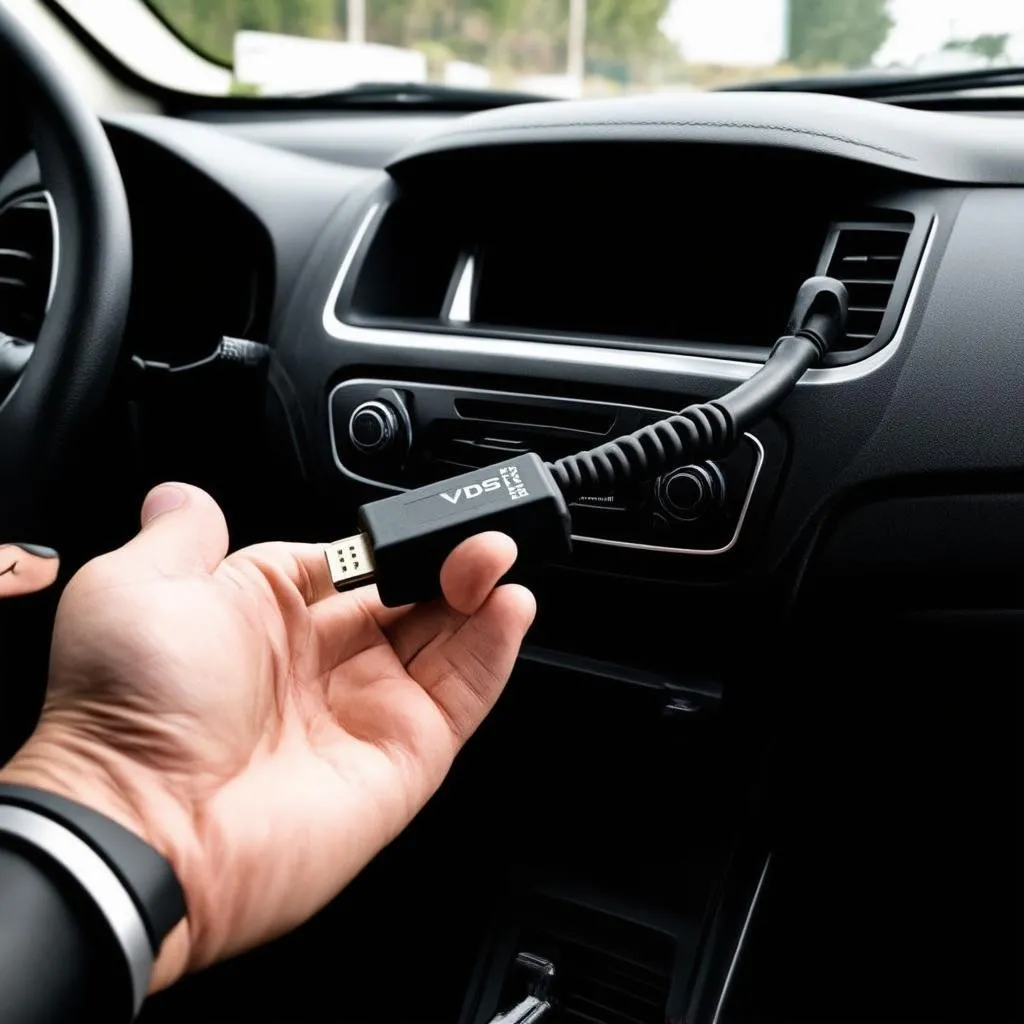VCDS, or Vag-Com Diagnostic System, is a powerful diagnostic tool used for Volkswagen, Audi, Seat, and Skoda vehicles. It allows users to access, read, and interpret the data flowing through a car’s various electronic control units (ECUs). This article will delve into the inner workings of VCDS, exploring its functionality and demonstrating its utility for both professionals and car enthusiasts.
Understanding the Basics of VCDS
VCDS operates by establishing a connection between a computer and a vehicle’s onboard diagnostic port (OBD-II). This connection allows the software to communicate directly with the car’s ECUs, the “brains” behind various systems like the engine, transmission, ABS, and airbags. Through this communication, VCDS can retrieve diagnostic trouble codes (DTCs), which pinpoint specific malfunctions within the vehicle. Furthermore, it goes beyond simply reading codes, offering the capability to view live data streams, perform output tests on components, and even make changes to the car’s coding.
 VCDS Software Interface
VCDS Software Interface
What sets VCDS apart from generic OBD-II scanners is its deep integration with the VAG group’s specific protocols. This allows for more comprehensive diagnostics and access to a wider range of functionalities than generic tools. For instance, while a generic scanner might only tell you that there’s an issue with the engine, VCDS can pinpoint the specific sensor or component causing the problem. This granular level of detail is invaluable for efficient troubleshooting and repair.
Accessing and Interpreting Data with VCDS
Once connected, VCDS presents a user-friendly interface, organizing the vehicle’s systems into various modules. Users can navigate through these modules to access specific ECUs and their related data. A key function of VCDS is its ability to read DTCs. These codes, represented by a combination of letters and numbers, correspond to specific faults detected by the car’s onboard diagnostics. For example, if you are concerned whether VCDS is compatible with your Porsche, you can refer to our article does vcds work on porsche.
 VCDS Reading Diagnostic Trouble Codes
VCDS Reading Diagnostic Trouble Codes
Besides reading DTCs, VCDS allows users to view live data streams from various sensors. This feature provides real-time insights into the operation of different systems, helping diagnose intermittent issues or verify the effectiveness of repairs. Imagine being able to monitor the fuel pressure, engine temperature, or oxygen sensor readings in real time. This level of insight is a game-changer for diagnostic work. If you’re curious about using VCDS for specific measurements like fuel pressure, check out our guide on vcds fuel pressure measuring block.
Beyond Diagnostics: Coding and Adaptations with VCDS
VCDS extends its functionality beyond mere diagnostics by enabling coding and adaptations. Coding allows users to change certain functionalities of the vehicle, such as enabling or disabling certain features. For instance, one could activate automatic locking of the doors when the car reaches a certain speed, or adjust the sensitivity of the rain sensor. Adaptations, on the other hand, allow fine-tuning of various systems. For instance, one can recalibrate the throttle body or adjust the steering angle sensor. These advanced features make VCDS a powerful tool for customization and performance tuning. Many users wonder about the compatibility of VCDS with different car models and software versions. We’ve addressed some of these concerns in our articles does vcds work on other cars and does vcds 16.8.3 work with 16.8.0 cable.
Conclusion: VCDS – A Powerful Tool for Automotive Diagnostics
VCDS offers a comprehensive suite of diagnostic and customization capabilities, making it an essential tool for both professional technicians and car enthusiasts. From reading and clearing DTCs to viewing live data and performing coding adaptations, VCDS empowers users to understand and interact with their VAG vehicles on a deeper level. Its user-friendly interface and in-depth access to vehicle systems provide a significant advantage over generic OBD-II scanners, making it a valuable investment for anyone serious about maintaining and understanding their car.
FAQ
- What is VCDS used for? VCDS is used to diagnose and customize VAG vehicles.
- Can VCDS be used on non-VAG cars? No, VCDS is specifically designed for Volkswagen, Audi, Seat, and Skoda vehicles.
- Is VCDS easy to use? Yes, VCDS has a user-friendly interface, but some technical knowledge is beneficial.
- What are the benefits of using VCDS? VCDS provides more detailed information and functionality than generic OBD-II scanners.
- Can I damage my car with VCDS? While unlikely, incorrect coding or adaptations can potentially cause issues. Proceed with caution and research thoroughly.
- Does VCDS work on a Chromebook? Find out more in our dedicated article: does vcds work on chromebook.
- Where can I learn more about using VCDS? Numerous online resources and forums offer tutorials and guidance.
Need assistance? Contact us via WhatsApp: +1 (641) 206-8880, Email: CARDIAGTECH[email protected] or visit us at 276 Reock St, City of Orange, NJ 07050, United States. Our customer support team is available 24/7.


